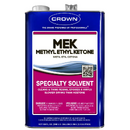I didn't see it mentioned but both surfaces have to be cleaned extremely well before trying to apply any sealant. I'll wipe each side down well at least 3 times with something called MEK. Also you can use Pilobond 25 for glue. It remains flexible even in the cold. DAP weldwood is available anywhere but gets a little stiff when it's cold. Neither is marketed as drysuit repair glue, so much less expensive.
If it's a new area (or one you've taken apart completely for whatever reason) you will want to rough it up with sandpaper and layer up either side with glue. Give it a few minutes in between each layer. DRiS has a pretty good rule of thumb for how many layers on their site depending on material (see pic). As mentioned, they also have a fantastic repair department that will answer any questions you have about DIY. If you do go DIY watch some YT videos 1st. It's really like 85% prep work and then 15% glue. DRiS will sell you a small can of glue for fairly inexpensive, but it won't cover a whole suit.
It's not hard, but does take time. Good luck!




